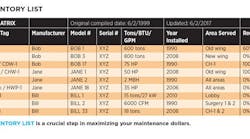Although the average data center footprint averages slightly more than 2,000 square feet, or 2% of office buildings that have them, their energy impact is far greater than their share of floor area.
The electrical demand from data centers involves much more than just the servers and other electronic equipment. The data center equipment is likely to run 24/7, unlike equipment serving the occupied office areas. Additionally, the heat generated by the data center requires more cooling with its own electrical demand.
Therefore, cooling electricity intensity in buildings with data centers nearly doubles that of the smallest (50,000 square feet or less) and largest (greater than 200,000 square feet) categories of office buildings without them and triple that of buildings in the 50,001- to 200,000-square-foot category, according to the U.S. Energy Information Administration (EIA).
Furthermore, total electricity intensity is higher in buildings with data centers compared to those without them at rates of 87% in the smallest, 60% in the middle category and 20% in the largest buildings. In all comparisons, EIA found electricity intensity to be higher in buildings with data centers, but the differences were smaller in the largest building category. The energy that a data center consumes can place a major burden on the energy budget, but it often goes unnoticed. Because submetering does not often track the specific energy usage of data centers, this data serves as a compelling suggestion for facility managers to look to their server rooms for energy reduction opportunities.
For more information about data center energy usage in office buildings, find results from the most recent Commercial Buildings Energy Consumption Survey (CBECS) at www.eia.gov.


